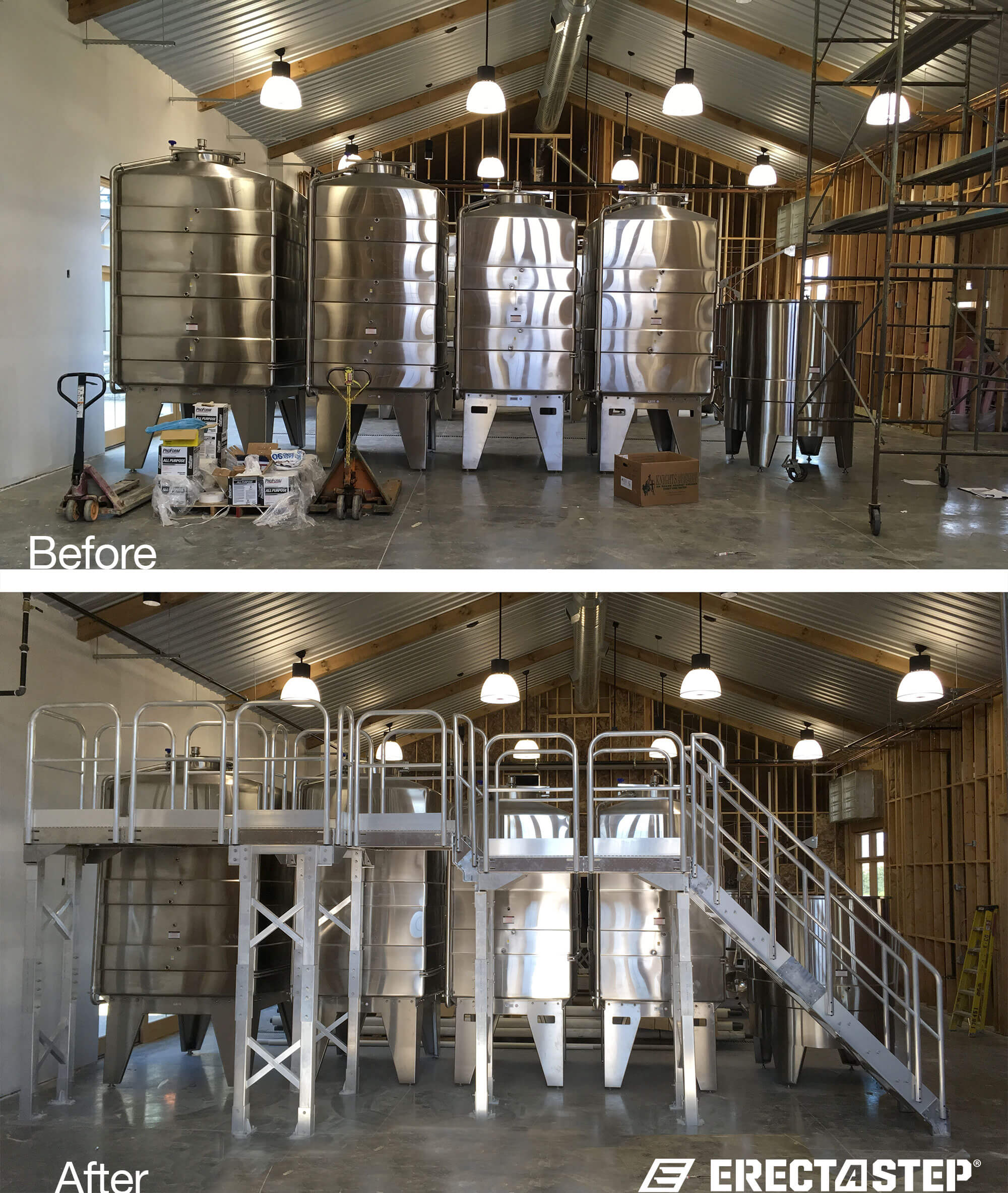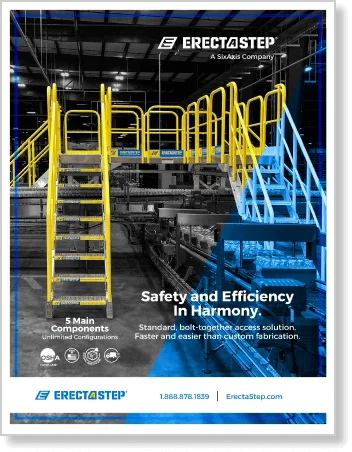Steel and aluminum are two of the most widely used materials on the planet.
Comparing Aluminum and Steel: Which Metal is Right for Your Project?
The choice between aluminum and steel is a big decision when considering materials for industrial applications such as safe access solutions. Companies like ErectaStep utilize primarily aluminum to provide durable and efficient access solutions tailored to meet various industrial needs. Here’s a broader look at how aluminum and steel stack up in general use, helping you decide which metal is best for your specific project requirements.
Corrosion Resistance
Aluminum is highly corrosion-resistant because it forms a protective oxide layer that shields the underlying metal from environmental elements. This characteristic makes aluminum ideal for applications where corrosion resistance is a priority, without additional protective coatings.
In contrast, carbon steel must be painted or galvanized to prevent rust and corrosion. Stainless steel, however, inherently resists corrosion due to its chromium content, making it suitable for environments that demand durability without frequent maintenance.
Malleability and Fabrication
Aluminum is known for its malleability and ease of fabrication, allowing for the creation of complex, detailed structures. This makes it particularly useful for projects requiring precision and intricate designs.
Steel, though less malleable, is valued for its toughness and resilience. It is more likely to maintain its shape under stress but can be more challenging to work into complex forms without special processing.
Strength and Durability
Steel is recognized for its superior strength and durability, making it a preferred material for applications that require robustness, such as in structural supports and heavy-duty frameworks.
Although aluminum is lighter and generally more prone to dents and scratches, it can offer increased strength in colder environments and is suitable for applications where a lighter material is beneficial.
Weight
Steel is significantly denser and heavier than aluminum, which can be a disadvantage or an advantage depending on the application. Aluminum’s lower weight makes handling easier and reduces transportation and construction costs.
Cost
Both aluminum and steel prices fluctuate based on global market conditions. Typically, steel is more cost-effective per pound. However, the choice may depend on specific project needs and the long-term benefits of using a lighter or more corrosion-resistant material.
| STEEL | ALUMINUM |
| Cheaper | More Expensive |
| Prone To Corrosion | Resistant To Corrosion |
| Heavier (490 lbs. per cubic foot) | Lighter (169 lbs. per cubic foot) |
| Absorbs Heat | High Thermal Conductivity |
| Very Strong | Less Durable |
| Longer Assembly Time | Easy To Assemble |
Application Uses
Steel is often chosen for its strength in construction, making it ideal for major infrastructure projects. Aluminum’s strength-to-weight ratio and corrosion resistance make it advantageous for high-rise buildings and structures that require lighter materials.
Both metals are also widely used in the energy sector, transportation, and consumer goods, each playing to its strengths depending on the specific requirements of the project.
Choosing the suitable metal—whether it’s aluminum or steel—depends mainly on the specific demands of the application, balancing factors like strength, weight, corrosion resistance, and cost.
Wood or Aluminum
- Durability: Aluminum outshines wood in durability, requiring minimal maintenance compared to the high upkeep of wood.
- Corrosion Resistance: Aluminum’s resistance to rust makes it a superior choice over wood, especially in challenging conditions.
- Ease of Assembly: Prefabricated aluminum solutions offer significant time and cost savings compared to labor-intensive wood construction.
- Strength/Weight: Aluminum is three times stronger than wood, making it a more reliable choice in various applications.
- Cost: While wood may have a lower upfront cost, the long-term benefits of aluminum outweigh the initial savings.
| WOOD | ALUMINUM |
| Less Expensive Upfront | More Expensive |
| Resistant To Corrosion | Resistant To Corrosion |
| Lighter (94 lbs. per cubic foot) | Heavier (169 lbs. per cubic foot) |
| Non-Conductive | Conductive |
| Less Durable | Stronger |
| Longer Assembly Times | Easy To Assemble |
Aluminum or Fiberglass
- Durability: Fiberglass resists scratches and dents, while aluminum protects against UV exposure.
- Corrosion Resistance: Both materials offer corrosion resistance, with fiberglass excelling in certain chemical environments.
- Strength: Aluminum’s durability surpasses fiberglass, making it more suitable for impact-prone applications.
- Weight: Aluminum is heavier than fiberglass but offers comparable strength at a lower weight.
- Cost: Fiberglass tends to be more expensive than aluminum, considering both material and manufacturing costs.
| FIBERGLASS | ALUMINUM |
| Cheaper | More Expensive |
| Resistant To Corrosion | Resistant To Corrosion |
| Lighter (112 lbs. per cubic foot) | Heavier (169 lbs. per cubic foot) |
| Non-Conductive | High Thermal Conductivity |
| Prone To Breaking or Cracking | More Durable |
| Longer Assembly Time | Easy to Assemble |
Conclusion
In choosing between aluminum and steel for industrial applications, including safe access solutions, it’s crucial to consider the specific needs of your project. Companies like ErectaStep rely on the durability, strength, and comparatively light weight of aluminum to optimize the functionality and safety of their installations. This strategic material selection is critical to developing effective and sustainable industrial solutions.







